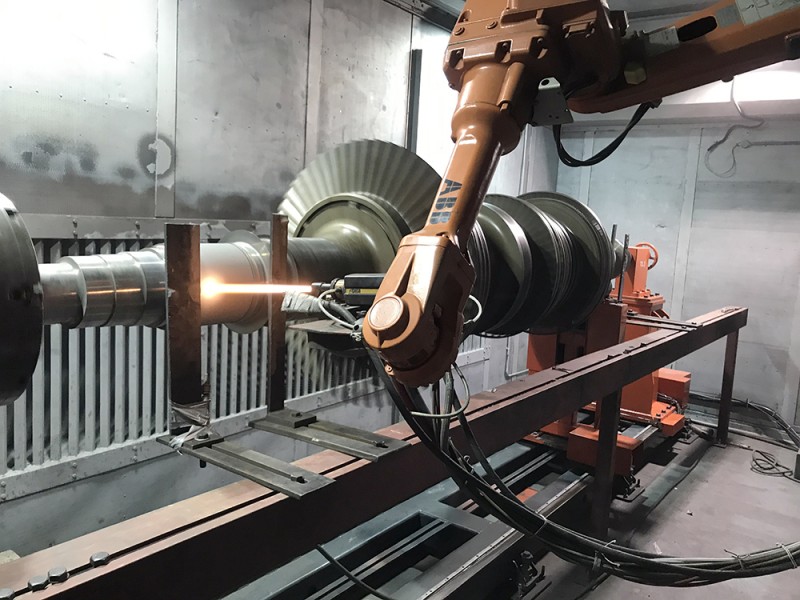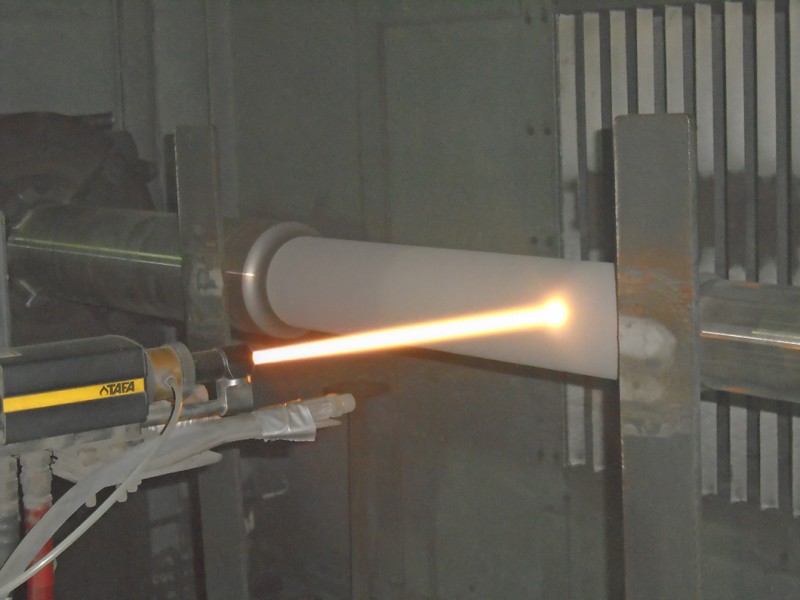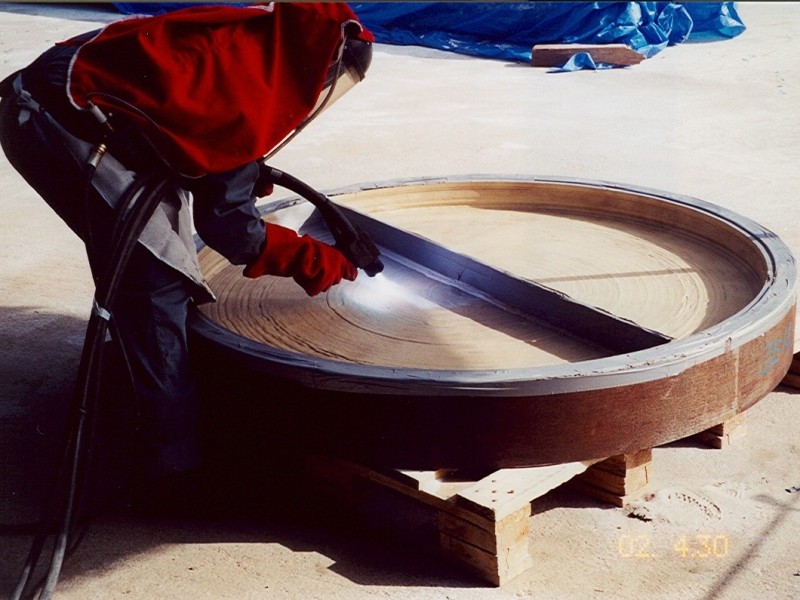Thermal Spray
Rainbow offers various types of thermal spray technologies to provide surface properties that suit customer needs.
High Velocity Oxy-Fuel
HVOF involves heating the cladding material and firing it towards the component at a supersonic velocity using oxy-fuel, which allows the formation of a dense coating with high bond strength, low stress and negligible porosity.
Rainbow can spray chrome oxides, ceramics, tungsten-carbide, Ni base alloys or others using our HVOF facility. Components repaired include:
- Drilling jars
- Mandrels
- Line shafts
- Exhaust valve spindles
- Pump shafts
- Pump casings (internal coatings)
Atmospheric Plasma Spray
Plasma Spray is a thermal spray coating process used to produce high quality coating. Plasma Spray process involves a flow of argon gas, between the electrode and the nozzle, which is used to create the heat source. A high frequency electric arc is ignited between an anode (nozzle) and a cathode (electrode). Direct current is applied to the cathode which arcs to the anode. Material in the form of powder is injected into a very high temperature plasma flame where it is rapidly heated and then applied to the surface at a high velocity.
A key advantage of Plasma Spray process is that it can spray materials having a high melting point such as ceramic powder, tungsten, nickel and cobalt alloys. Plasma Spray coatings are generally much denser, uniform, stronger, less porous and resistant to wear, corrosion, abrasion, heat and oxidization .Thermal barrier coatings are done by the plasma process. It is applicable in industries such as:
- Automotive
- Steel
- Marine
- Aerospace
Twin Arc Spray
Twin Arc Spray is a wire spray process used for rebuilding of shafts and also to provide special protective coatings on bearing bushes and pump casings. Various grades of material such as Babbitt (white metal), Stellite, Monel™, nickel-chrome and 316L stainless steel are utilized for coating.
Sectors serviced include:
- Oil exploration
- Oilfield operation
- Marine
- Construction
- Cement/crusher transport
- General engineering
Regularly sprayed components include:
- Hydraulic rams
- Piston rods
- Pump shafts
- Turbine parts
- Extruder screws
- Mud motor rotors
- Downhole tools
- Bearing seal & seating areas
-

Thermal Spray
-

Thermal Spray
-

Thermal Spray
-

Thermal Spray